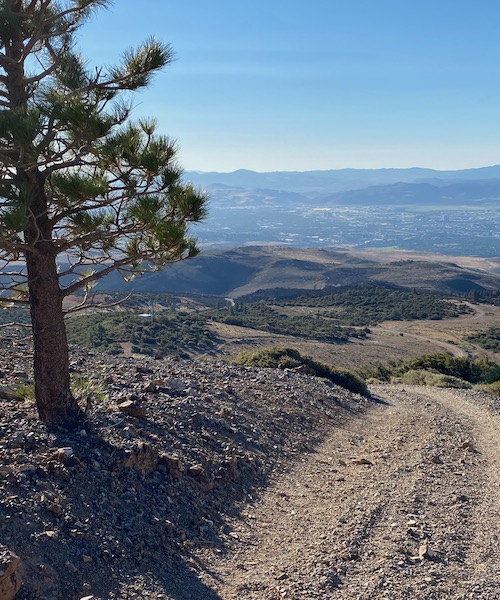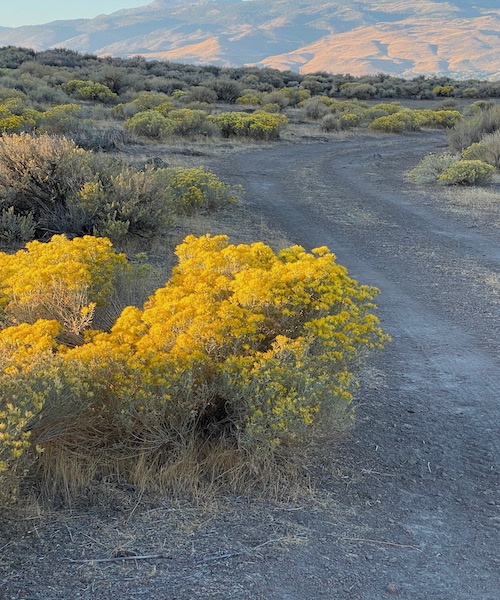oldpacker45@icloud.com
- - - - - - - Go To - - - - - - -
Peavine Peak
Peavine is blessed by both its relative isolation, and its location in a ecological transition. It is just far enough east of the Sierra crest that it gets significantly less rain than there, and just close enough to the crest that it gets a fair amount of rain nonetheless. In one monolithic structure it goes from 4500 foot elevation to nearly 8300. The result is diversity. At the bottom, it is sagebrush, which also includes rabbitbrush, and saltbrush. If ignited, it burns hot, and fast, but fortunately without the intensity of a California forest fire.
There are also pockets of Ponderosa Pine, which get bigger and more prevelent the higher up the mountain you go.
At the very top, the combination of wind and snow creates areas that are, for all purposes, limited to alpine vegetation. Plants that can grow to maturity very quickly as soon as the snow is gone, and complete their cycle before the next snows come.
To my thinking the crowning glory is the springs. The mountain is blessed with a number of them, some of which run to the surface year round. Whether or not the water is at the surface, it runs down hill readily through the porous soil, resulting in pockets of aspen at the bottom of most canyons, with the pockets running from nearly the top to nearly the bottom.
All together it amounts to a dream land for deer. Which means it is also a dream land for coyote and cougar.








